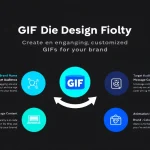Is this tool helpful?
How to Use the Tool Effectively
This Product Catalogue Designer helps you quickly build branded marketing materials tailored to your business. Use each field carefully to maximize your catalogue’s impact.
Step-by-Step Guide to Each Field
- Brand Name: Enter your business name exactly as you want it displayed. For example: “Solstice Eco Apparel” or “Urban Pulse Electronics”.
- Product Category: Pick the main category that covers your products. This guides the design towards your industry style. Examples include: “Sustainable Outdoor Clothing” or “Smart Home Devices”.
- Catalogue Style: Choose the visual style that fits your brand identity. Consider options such as: “Clean & Contemporary” or “Vintage & Artistic”.
- Target Audience: Describe who you want to reach, like: “Tech-savvy millennials” or “Eco-conscious families”. This is optional but helps tailor design suggestions.
- Key Product Features: Highlight major product benefits or unique qualities. For instance: “Waterproof and breathable fabrics, recycled materials” or “Voice-controlled, energy-efficient”.
What Is the Product Catalogue Designer?
The Product Catalogue Designer creates branded marketing materials by transforming your basic brand and product details into targeted catalogue design recommendations. It combines your brand’s identity with professional design principles to produce suggestions aligned with your business goals and audience preferences.
This tool saves you time and resources by giving clear, practical design ideas that reflect your style and product focus, helping your marketing materials convert better.
Key Benefits at a Glance
- Design suggestions tailored to your brand and product category
- Flexible options for both print and digital catalogues
- Layouts and styling that reflect your target audience
- Guidance on visual hierarchy and content flow
Practical Uses of the Product Catalogue Designer
Use this tool whenever you need well-organized, professional catalogue designs that suit your brand and audience. Here are some common use cases:
Seasonal Product Collections
When launching new seasonal items, quickly generate catalogue styles that emphasize the collection’s mood. For example, a home decor brand introducing fall accessories might receive warm, cozy design suggestions that highlight textures and colors.
Multi-Brand Retailers
Retailers carrying various brands can create customized catalogue sections for each, keeping the overall catalogue cohesive yet distinct. For example, a store with sportswear, tech gadgets, and wellness products can receive separate design ideas for each section while maintaining a unified look.
E-commerce Marketing Materials
Online sellers can ensure their digital catalogues match their website’s look and feel. For instance, a handcrafted jewelry line might get catalogue designs with elegant typography and minimalist layouts that complement their website aesthetic.
Frequently Asked Questions
Can I create multiple catalogues for different product categories?
Yes, generate separate catalogue designs for each product category by submitting different entries with specific brand and audience details.
How do I get designs that work for both print and digital formats?
Indicate your preference for print, digital, or both, and receive catalogue recommendations optimized for your selected formats.
Can I adjust the design suggestions after generation?
Absolutely. The tool provides guidelines and ideas which you can customize further to suit your exact needs.
What kind of product descriptions should I provide?
Detailed, benefit-focused descriptions that highlight unique features help generate more precise and effective design recommendations.
How specific should my brand style description be?
Be clear about the mood, color palette, typography, and overall visual impression you want. Examples: “Bold and urban with dark colors and geometric shapes” or “Soft and organic with pastel tones and hand-drawn elements.”
Is the tool suitable for small businesses?
Yes, it supports businesses of all sizes by offering professional design insights that scale with your brand’s needs.
When should I update my catalogue design?
Update your designs seasonally or after major product launches and branding changes to keep materials fresh and relevant.
Can I use this for international markets?
Yes, the design recommendations can be tailored to reflect cultural preferences and regional market trends.
Important Disclaimer
The calculations, results, and content provided by our tools are not guaranteed to be accurate, complete, or reliable. Users are responsible for verifying and interpreting the results. Our content and tools may contain errors, biases, or inconsistencies. Do not enter personal data, sensitive information, or personally identifiable information in our web forms or tools. Such data entry violates our terms of service and may result in unauthorized disclosure to third parties. We reserve the right to save inputs and outputs from our tools for the purposes of error debugging, bias identification, and performance improvement. External companies providing AI models used in our tools may also save and process data in accordance with their own policies. By using our tools, you consent to this data collection and processing. We reserve the right to limit the usage of our tools based on current usability factors.







